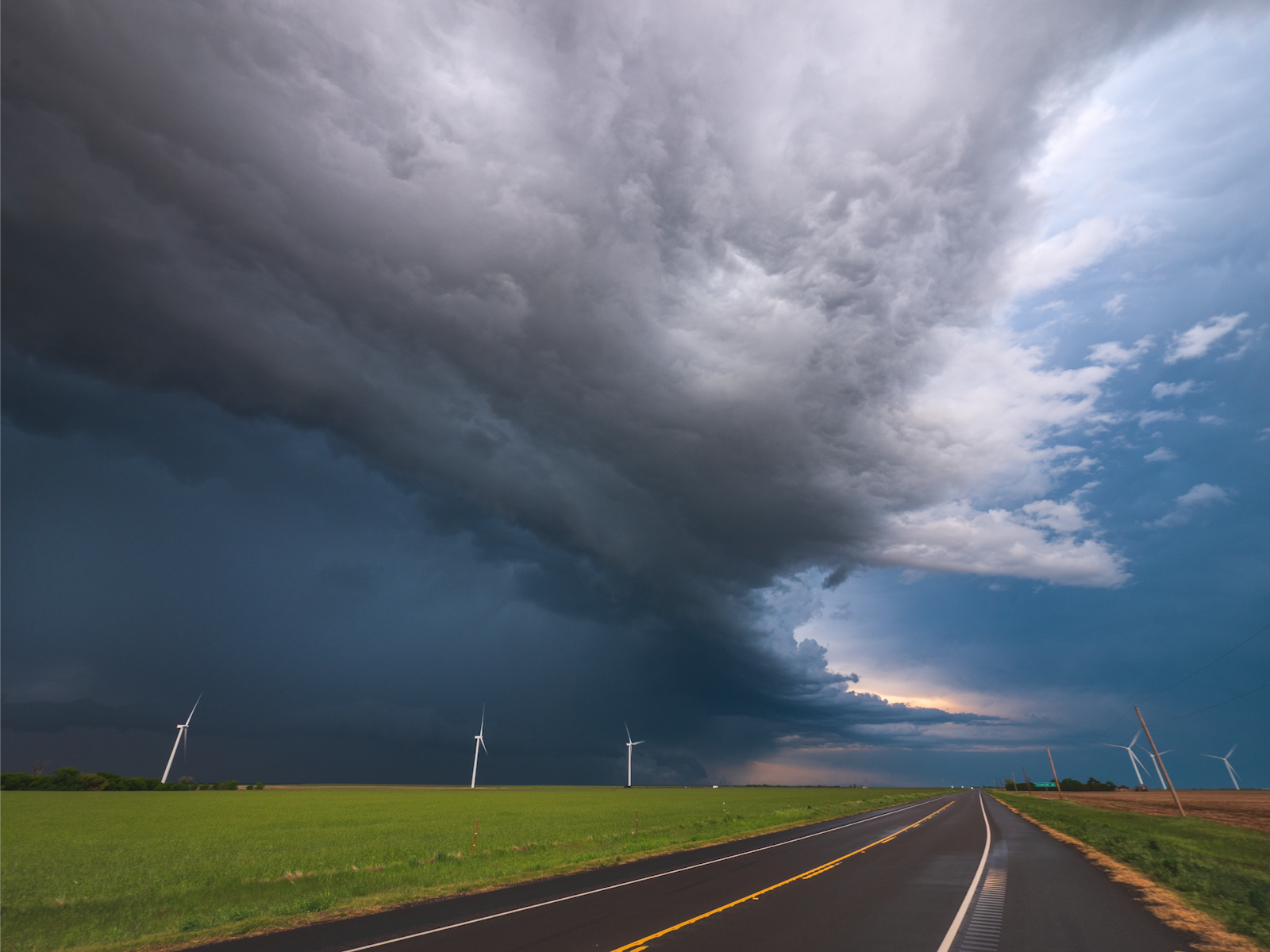Clustered Mesoscale Convective Systems Produce Frequent and Long-Lasting Floods in the Central-Eastern United States
Mesoscale convective systems that are clustered in time and space have broader impacts on flooding than individual systems

Mesoscale convective system events produce intense rainfall that can cause severe flooding. When these events are “clustered” in time and/or space, they can produce more and longer flooding.
(Image by Raychel Sanner | Unsplash)
The Science
Mesoscale convective systems (MCSs) are large, organized storms that often produce floods. Building on a previous study that quantified the floods associated with MCSs over the central-eastern U.S., scientists extended the MCS-flood linkages by examining flood risk associated with a subset of MCSs clustered in time and space from April-June. They found that the clustered MCSs are more effective in producing floods than non-clustered MCS. The clustered MCSs produce greater rainfall volumes and are associated with wetter initial soil conditions. The successive rainfall from multiple overlapping MCSs in the same cluster and related wetter soils result in more runoff.
The Impact
MCSs are the primary cause of warm-season flooding in the central-eastern U.S. Separating the clustered and non-clustered MCSs and comparing their flood risks reveals that clustered MCSs more effectively produce floods. The 2015 Texas/Oklahoma flood is an example of flooding induced by a cluster of warm-season MCSs, resulting in ~$45 million in flood damage. The strong connection between floods and clustered MCSs motivates the need to improve prediction of clustered MCSs and their meteorological environments. Taking both rainfall and terrestrial conditions into account, this study provides information to better understand changes in flood likelihood in response to climate change.
Summary
MCSs that are clustered in time and space can have a broader impact on flooding because they cover more area than individual MCSs. However, the flood likelihood associated with MCS clusters is poorly understood. To better connect clustered MCSs and flooding, researchers matched floods in the Storm Events Database in April–August of 2007–2017 with clustered MCSs identified from a high-resolution (hourly and 4 km) MCS dataset and terrestrial conditions in a land surface dataset over the central-eastern U.S. The analysis indicated that clustered MCSs preferentially occurring in April–June are more effective at producing floods. These floods last longer due to the greater rainfall per area and wetter initial soil conditions, producing more runoff per unit area than non-clustered MCSs. Similar increases in flood occurrence with increases in the size of the total rainfall area and the soil wetness within the MCS clusters are also observed, particularly in overlapping rainfall areas of individual MCSs within the clusters. These areas receive rainfall from multiple MCSs that progressively wet the soils, leading to a higher likelihood of floods. This study underscores the importance of understanding clustered MCSs to better mitigate current and future flood risks.
PNNL Contact
L. Ruby Leung, Pacific Northwest National Laboratory, Ruby.Leung@pnnl.gov
Funding
This research is supported by the Department of Energy, Office of Science, Biological and Environmental Research program as part of the Regional and Global Modeling and Analysis and MultiSector Dynamics program areas.
Published: April 6, 2023
Hu, H., Z. Feng, and L. R. Leung. 2022. “Quantifying Flood Frequency Associated with Clustered Mesoscale Convective Systems in the United States,” J Hydrometeorol., 23, 1685–1703. [DOI: 10.1175/jhm-d-22-0038.1]